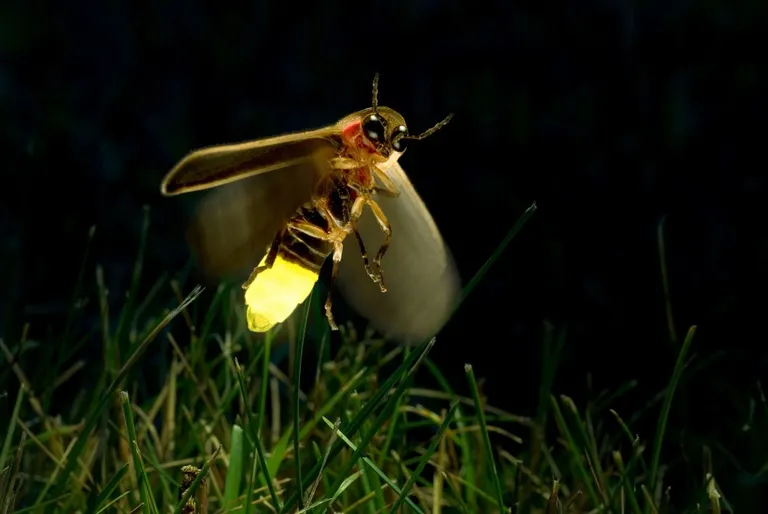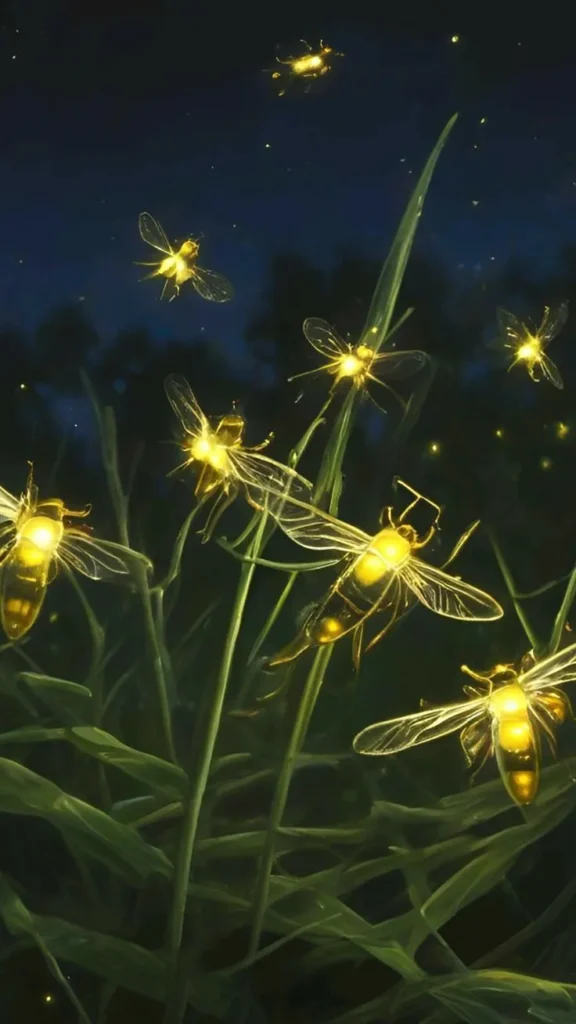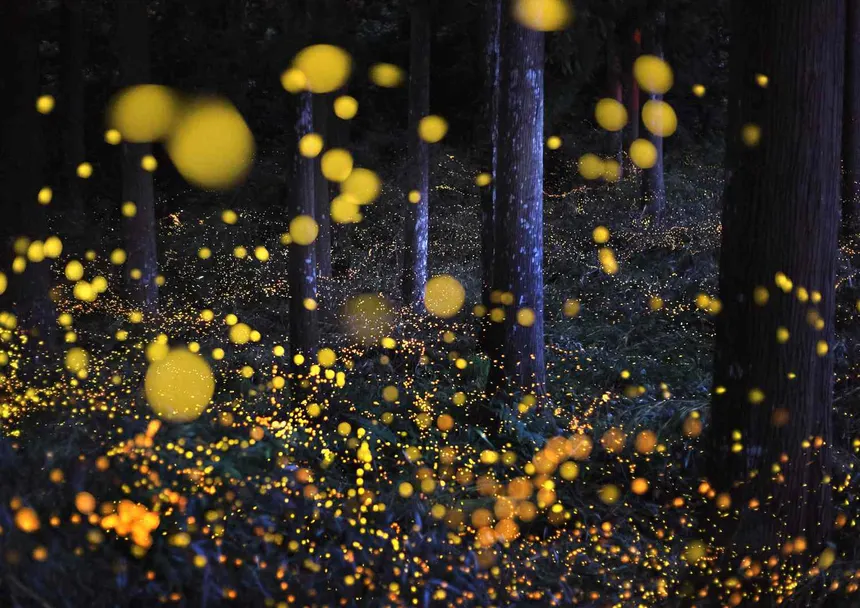Fascinating Facts About Fireflies

Fireflies, also known as lightning bugs, are some of nature’s most enchanting insects. Their blinking lights on warm summer nights have inspired myths, scientific curiosity, and childhood wonder around the world. But there’s more to these glowing beetles than just their luminous charm. From their biological makeup to their complex behavior, fireflies are a marvel of evolution, communication, and survival.
This article delves into the most interesting, surprising, and educational facts about fireflies, exploring how they light up, where they live, why they glow, and their importance in the natural world.
1. Fireflies Are Actually Beetles
Despite their name, fireflies are not flies at all—they’re beetles from the family Lampyridae. There are over 2,000 species of fireflies found around the world, mostly in tropical and temperate regions.
2. They Produce Cold Light Through Bioluminescence
The light that fireflies emit is a result of bioluminescence, a chemical reaction in their lower abdomen involving:
- Luciferin (a light-emitting compound)
- Luciferase (an enzyme)
- ATP (energy molecule)
- Oxygen
This process produces “cold light”—almost no heat is generated, which is an incredible feat of natural efficiency.
3. Firefly Light Is Used for Communication
Fireflies use their light to:
- Attract mates (each species has a unique flashing pattern)
- Warn predators of their toxicity
- Fake other species’ flashes (in some predatory species like Photuris)
The mating flash patterns are so specific that scientists can identify species just by the rhythm and duration of the blink.
4. Some Fireflies Don’t Glow at All
Not all firefly species produce light. In some species, only larvae or adult females glow, while in others, no life stage glows at all. These non-glowing types often rely on chemical signals for communication.
5. Firefly Larvae Are Ferocious Predators
Before they enchant us with light, firefly larvae live in the soil or water and feed on:
- Snails
- Worms
- Slugs
- Other insect larvae
They use their jaws to inject digestive enzymes, liquefying prey before consumption.
6. Adult Fireflies May Not Eat at All
While larvae are active feeders, many adult fireflies don’t eat. Their main focus during the adult stage is reproduction. Some species, however, may feed on nectar, pollen, or even other insects.
7. Fireflies Are Toxic to Many Predators
Fireflies produce lucibufagins, bitter-tasting chemicals that deter predators like birds and spiders. The flashing light acts as a warning: “Don’t eat me—I taste bad!”
8. They Exist on Every Continent Except Antarctica
Fireflies are found on every continent except Antarctica. They thrive in warm, humid areas—woodlands, meadows, marshes, and areas near ponds or streams. Southeast Asia and the Americas are especially rich in species diversity.
9. Synchronous Fireflies Are a Rare Spectacle
Some species, like Photinus carolinus, synchronize their flashes with others in the group—entire forests can blink in perfect unison. This dazzling display occurs in places like the Great Smoky Mountains (USA) and Southeast Asia.

10. Firefly Populations Are Declining
Fireflies face several threats:
- Habitat loss
- Light pollution, which confuses their mating signals
- Pesticide use
- Climate change
Some areas that once hosted thousands of fireflies now see only a few. Conservation efforts are growing to protect these insects and their habitats.
11. They Have Cultural Significance Around the World
In Japanese culture, fireflies (called hotaru) symbolize the souls of the dead and are celebrated in poetry, art, and festivals. In other cultures, fireflies represent hope, love, and transformation.
12. Their Light Can Be Red, Green, or Yellow
Depending on the species, fireflies can emit different colors of light, usually ranging from:
- Pale yellow
- Bright green
- Orange-red
Each color may help species differentiate themselves from others.
13. Scientists Use Firefly Enzymes in Research
The enzyme luciferase is used in medical and genetic research as a marker. Scientists can insert the luciferase gene into cells and track it by watching whether the cells glow—helping in cancer research, drug testing, and biotechnology.
14. Some Species Use Mimicry to Hunt Other Fireflies
A group of fireflies called “femme fatale fireflies” (Photuris species) imitate the flashes of other species to lure males and eat them. It’s a deadly case of deceptive courtship.
15. Firefly Eggs Can Glow Too
In some species, even the eggs glow faintly in the soil. This may help deter soil-dwelling predators, or it could be a byproduct of their biochemistry.
16. They Are More Active in Humid Conditions
Fireflies are most commonly seen during warm, humid summer evenings. Dry conditions reduce their numbers, which is why they are more abundant near wetlands and during rainy seasons.
17. They Live Short Adult Lives
The adult stage of a firefly’s life lasts just a few weeks. Their entire purpose during this time is to find a mate and reproduce before dying.
18. Firefly Larvae Glow as a Defense Mechanism
Even in their early stage, firefly larvae produce light to signal to predators that they’re not worth eating. This is a form of aposematism, or warning coloration.
19. They Are Indicators of a Healthy Environment
Because fireflies rely on moist, unpolluted environments, their presence is often an indicator of healthy ecosystems. A sudden drop in firefly populations can signal environmental degradation.
20. Firefly Tourism Is Growing Worldwide
Regions with large firefly populations are now offering eco-tourism experiences, like night walks and boat rides through glowing mangroves. Conservationists hope that such tourism promotes awareness while protecting habitats.

Conclusion
Fireflies are more than just magical insects lighting up summer nights—they are complex, highly evolved creatures with rich biology and cultural meaning. As glowing messengers of nature, fireflies remind us of the importance of conservation, the beauty of science, and the wonder that still exists in the world’s backyards and forests.



